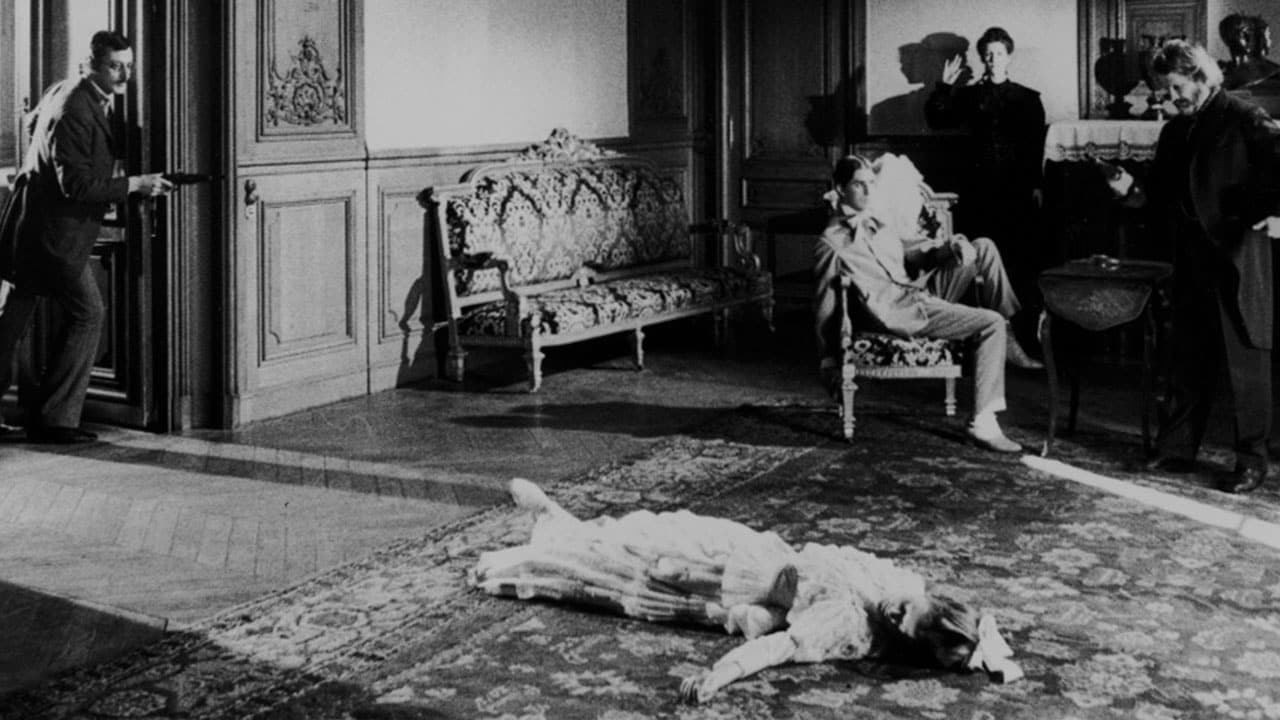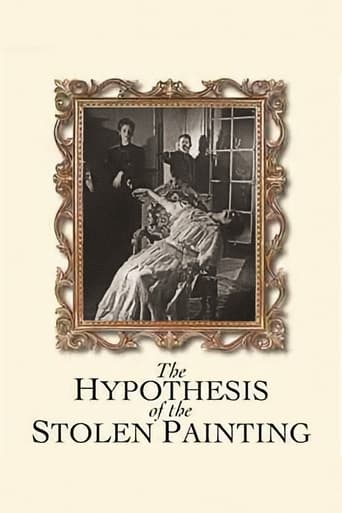

One of the most stimulating experiences in my nightly meditation has been bestowed to me by dogs. I think we're all familiar with it, unseen dogs barking distantly into the night. You can hear them bark in groups or alone, far and close, sometimes in a chorus. The poetic notion is to imagine them secretly communicating in the mysterious way of animals. Or better yet, if one of them barks a reaction to something, say a passing vehicle, what are the rest reacting to, which they have not seen? Or are these barks nothing more than a wild gesture of participation in the collective uproar, an affirmation of existence?More importantly, what kind of view does the detached observer point in all this, who seeks patterns among the seemingly random signs? I'm not waxing here, this is what the film is about. A stratagem about six paintings (and a seventh, the stolen one), about which nothing is known except that they mysteriously caused a scandal in 19th century Paris, devised so that from behind the arcane allusions to symbols and signs, the original narrative will be extricated. The original meaning as once intended and then lost to us.The paintings come alive for us, as living tableaux. But as objects being filmed, also as cinema. Various standing figures in these enactments regard each other in mute contemplation, and all of these are regarded in turn by our narrator who walks among them to decipher their place and meaning. And then of course, us on the final end. Viewers within viewers, as in Chris Marker. Godard must have painstakingly studied this for his Histoire(s) project and other essayist works on art.So this is the fascinating stuff. All these nested narratives as fragments of cinema, potentially hiding a story of erotic intrigue in them which we attempt to surmise. Elaborate (stridently interprative) symbol theory as a device that allows us to traverse the paintings from first to last, which is rendered useless by the fact that one of them is missing. An imaginative interpretation of that missing painting as an attempt to bridge the gap and as borrowed from a third fictional source, a 19th century novel supposedly inspired by the events depicted. Nagging possibilities that the summary of the novel that purports to explain the images was in turn devised by Ruiz for the purpose of the film.Furthermore the intelligently nested remark that the artist is complicit in what he represents, on one level as the painter who sketches the members of a conspiracy, on a second as the filmmaker who makes the film about them.From these obscure allusions, finally a meaning is extracted as first principle that inspired the work here, something about the paintings representing souls yearning to be in the world again. But even that, like everything that comes before, is wearily conceded to be nothing more than fanciful conjecture, our own imprints of meaning upon a mystery of images.We might be inclined to conclude that the exercise, though stimulating, has lead nowhere. But here's the beauty of this, the paths and inroads Ruiz has charted inside the maze. Not the meaning of the image or even the image itself, but that it has been captured between two mirrors so that it reverberates forever.
... View MoreI must say I was impressed the cinematography was amazing, the frames close to perfection and the way he built up the tension around a subject that sound more like a dreadful bore is beyond be.The film is about two narrators, one seen, one unseen. They are both trying to explain the significant of a series of painting that caused a scandal a long time back. The film is all about theories and explanations of views but the conclusion is quite shocking I must say. Definitely a film that deserves more than it's 171 votes.With only 66 minutes to play out it's plot the film still felt like a complete work. Fantastic direction! I must say far better than Blood of the Poet which it for some strange reason remind me a bit of. I suppose you can call it by the slang word "artsy". It's pretty much just a lot of professional talk about various theories and stunning visual effects but the crew and Ruiz did pull it off. At least for me. An amazing film.
... View MoreHaving read during many years about how great this film was, how it established Ruiz among the french critics (specially the snobbish Cahiers crowd), when I finally watched it about a year ago, I found it pretty disappointing (but then, I guess my expectations were sky-high). Shot in saturated black and white, this deliberately cerebral film (made for TV, and mercifully, only an hour long) is told in the form of a conversation between an art connoisseur and an off-screen narrator as they ponder through a series of paintings (which are shown in the style of tableaux vivants) and try to find if they hold some clues about a hidden political crime. (The awful Kate Beckinsale film Uncovered has a similar argument). Borgesian is a word I read a lot in reviews about this movie, but I would say almost any Borges story is more interesting than this film.
... View MoreThis is a strange, cerebral, surreal, esoteric film. If there is such a thing as "intellectual horror" cinema, this film is it. I started to get scared and wish there was someone else watching it with me, and it barely has a plot! I'm going to have to see this film again multiple times before I feel I really understand it. If you're the kind of person who likes "My Dinner With Andre" and films by Godard, or if you do a lot of mind-altering drugs, you will probably enjoy this film. Wow.
... View More